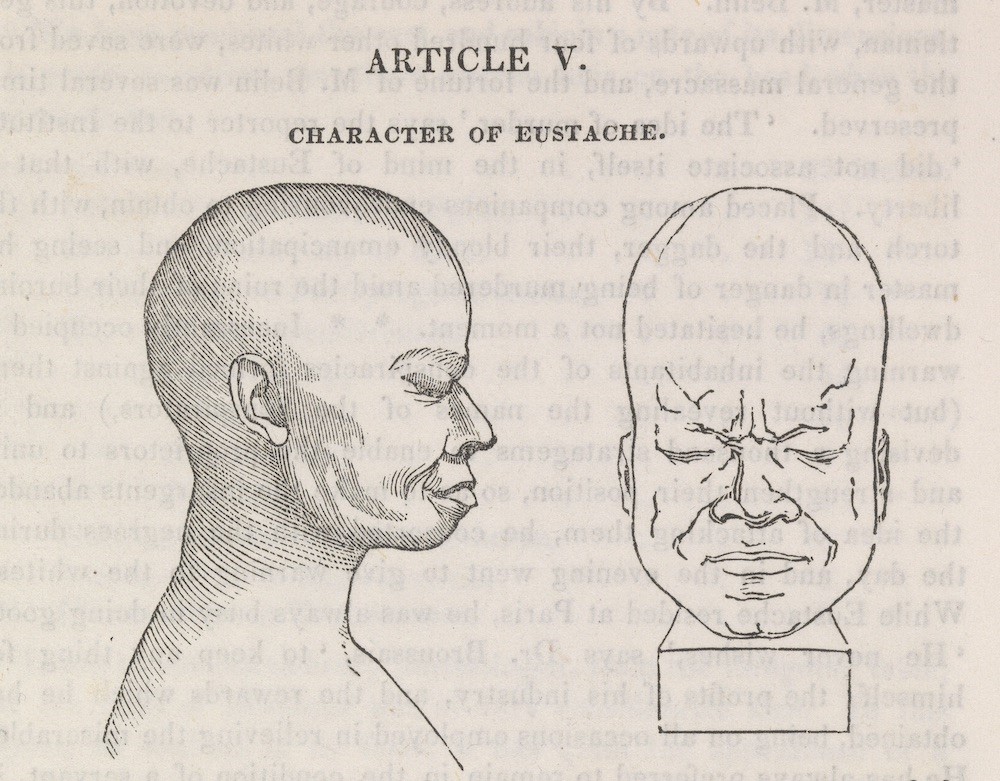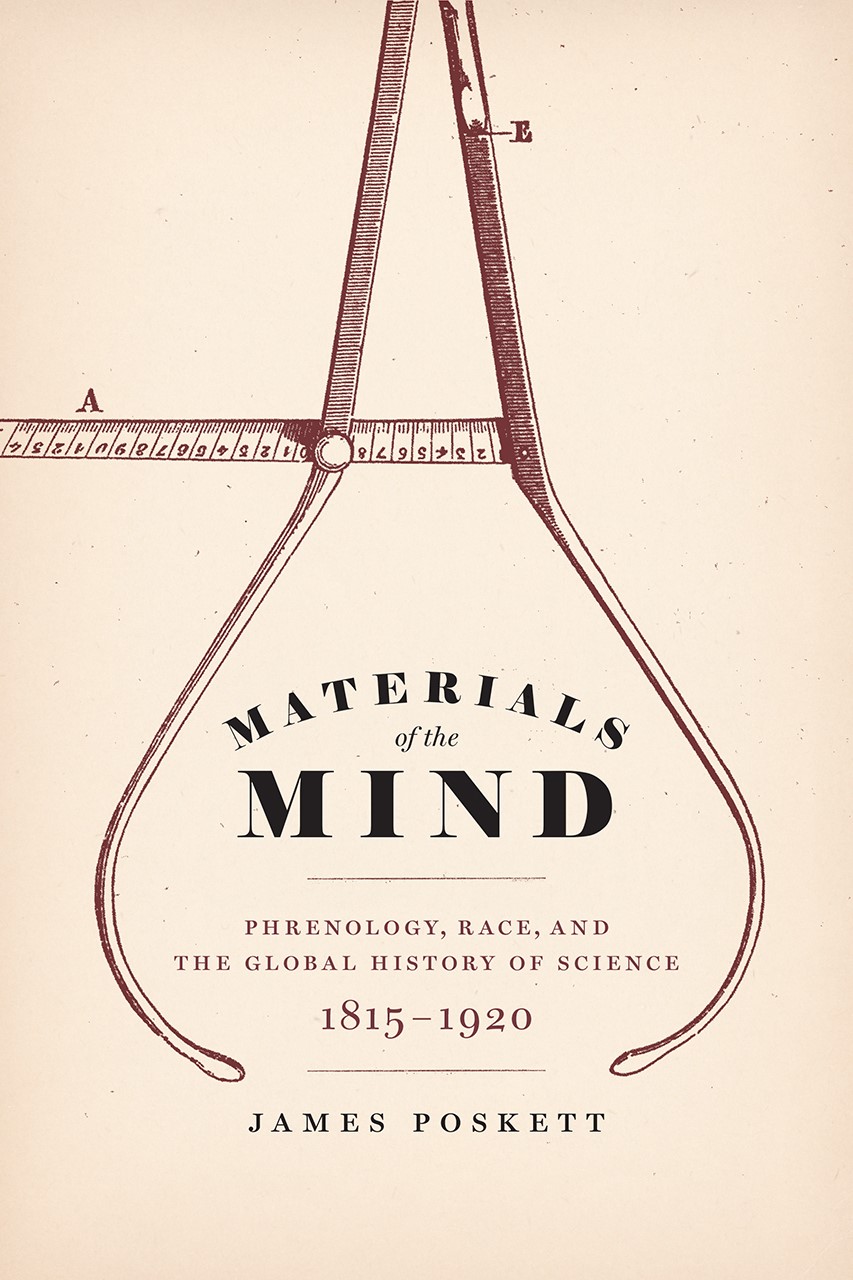Materials of the Mind: Phrenology, Race, and the Global History of Science, 1815–1920
Published 19 May 2019 - James Poskett
This is the head of a man named Eustache Belin. He was born a slave on the French colony of Saint-Domingue in 1773. But, amidst the Haitian Revolution of 1791, Eustache escaped to France. In Paris, Eustache became a celebrity. He was awarded the Prize of Virtue by the Institut de France and, in the 1830s, a French phrenologist took a plaster cast of his head.

Figure 1: ‘Character of Eustache’, The American Phrenological Journal, 2 (1840), p. 177. Wellcome Collection: CC-BY.
Over the following decades, copies of this plaster cast circulated around the Atlantic world. Eustache’s bust was deployed in arguments both for and against the abolition of slavery, as debate raged over the status of African character and the meaning of the Haitian Revolution.
The bust of Eustache Belin is just one of the objects I explore in my new book, Materials of the Mind: Phrenology, Race, and the Global History of Science, 1815-1920, published by the University of Chicago Press. This is a story of skulls from the Arctic, photographs from India, books from South Africa, and letters from the Pacific. By following these objects across the world, I show how the circulation of material culture underpinned the emergence of a new materialist philosophy of the mind.
Phrenology and the Global History of Science
What then was phrenology? Put simply, phrenology was the doctrine that the brain was the organ of the mind. Crucially, phrenologists believed that the contours of the skull matched those of the brain, and so you could read off someone’s character from the shape of their head. A large organ of “benevolence” at the front of the head might lead someone to do good deeds. A large organ of “amativeness” at the back of the head might give someone irrepressible sexual desires. What mattered ultimately was the idea that the mind was material. And whilst clearly such an idea had existed before, phrenology was the first materialist science of the mind to gain widespread international recognition.
Phrenological books were the global bestsellers of the day. In 1828, the Scottish phrenologist George Combe published a book entitled The Constitution of Man. By 1900, this book had sold over 300,000 copies and had been translated into at least six languages, including Bengali and Japanese. (For comparison, Charles Darwin’s On the Origin of Species only sold 50,000 copies by 1900.) From the Indian social reformer Rammohun Roy to Queen Victoria herself, phrenology found supporters right across the globe.
Perhaps most surprisingly, phrenology found a receptive audience amongst colonised people and former slaves. For sure, there were plenty of critics. But there were also a number of individuals in the colonial world who took up phrenology. They used it as part of a counter narrative, arguing that a modern science of the mind would reveal the injustices of colonialism and slavery. Some even tried to use phrenology to help build anticolonial national identities. In my book, I focus in particular on a group of Bengali medical students, led by the phrenologist Cally Coomar Das, as well as a Barbadian former slave named W. D. Maxwell. By the early 1900s, phrenology even found supporters in Republican China. Alongside Freud and Lenin, Chinese psychologists studied phrenology, hoping to forge a new national identity through a new science of the mind.
As well as a history of phrenology, my book is also a broader reflection on what it means to write a global history of science. Hopefully this blog post has given you a flavour. For me, global histories of science need to break beyond traditional national, regional, and imperial units. And they need to give voice to a diversity of people, both in Europe and beyond. But global histories of science also need to recognise imbalances of power and failures of globalisation. That is in part why I chose to study the history of phrenology through objects. Focusing on the material world forces us to confront the harsh realities of global exchange. Like today, the networks of the nineteenth century brought people closer together, but also pushed them apart.
Dr James Poskett is Assistant Professor in the History of Science and Technology at the University of Warwick. His first book, Materials of the Mind: Phrenology, Race, and the Global History of Science, 1815–1920, has just been published by the University of Chicago Press.



